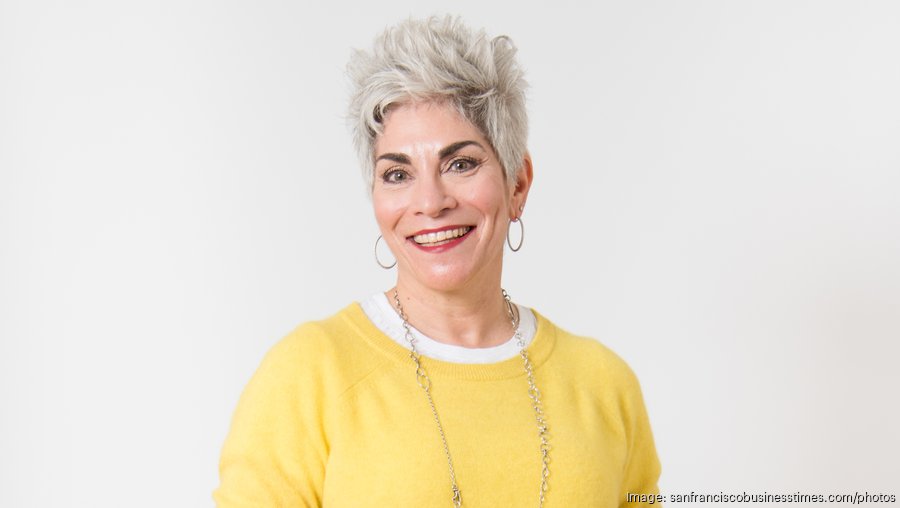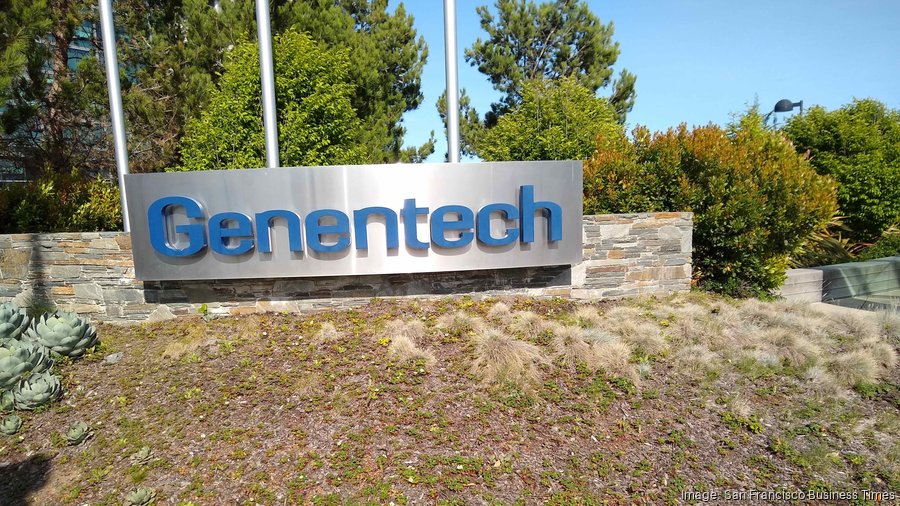Biotech pioneer Genentech Inc.'s South San Francisco campus could grow to 9 million square feet, according to a 20-year master plan submitted this week to city officials that envisions adding 12,000 employees over the next several decades.
The master plan doesn't mean the company has specific plans to build in exact locations at precise times across its 207-acre bayside campus, but it sketches a vision that would nearly double the current 4.7 million square feet that houses 15,000 scientists, executives, staff and contractors. The company is asking city officials to eliminate a previous 6 million-square-foot space cap and allow the company to reach 9 million square feet, if needed, over the next two decades.
The 166-page plan is designed as more of a guide for company and city officials so they can lay out the infrastructure that Genentech and its growing legion of biotech industry neighbors need.
"It's a mechanism to develop the individual buildings a lot quicker," said Carla Boragno, global head of engineering and facilities, pharma technical operations, for Switzerland-based parent company Roche and a longtime Genentech executive.
But Genentech's master plan is more than a real estate map for South San Francisco's single largest taxpayer and employer. It also lays out general goals like the 43-year-old drug developer — the North American biotech unit of Roche — to reduce the number of car trips to and from the campus as well as boost its involvement in planning for biotech industry growth east of Highway 101 and interacting with the community at large.
Some 42 percent of Genentech employees already arrive at work by some other means than a single-occupant car, Boragno said. The city requires 35 percent and the company's neighbors are at 20 percent.
At the same time, Genentech is talking with neighbors about their employees hopping on Genentech's bus system that brings employees from throughout the Bay Area to campus and supporting a "community facilities district" with a self-imposed tax for infrastructure improvements.
"Every 10 years, we see how the business has changed and how it would help the city plan its infrastructure," Boragno said. "It's the right thing to do when you think about long-term growth."

Real estate master plans are common for big, fast-growing companies. Genentech's first plan was adopted by the city in 1995, for example, and HIV, hepatitis C and cancer drug developer Gilead Sciences Inc. (NASDAQ: GILD) has one in place in Foster City.
Genentech's proposed master plan provides insight into continued dramatic growth for Genentech over the next 20 years. Since South San Francisco created a specific Genentech master plan zoning district in 2007, the net square footage on the campus has grown from 2.8 million to 4.7 million square feet, including more than 800,000 square feet on the company's newer "south campus."
Much of the future growth would come from Genentech building taller buildings of up to nine stories — like structures real estate developers have built at nearby sites on Oyster Point Boulevard and East Grand Boulevard in recent years — and on in-fill sites on the campus. That comes after rapid growth forced Genentech for several years to lease off-campus space.
"The city has been proud to be home to Genentech for 43 years and proud to be a partner with them to support and facilitate and coordinate with them on their plan as they grow," said Alex Greenwood, director of economic and community development for the city.
"Having said that, there are issues that need to be discussed to be sure: We need to understand how development will happen and issues like transportation are going to be managed," Greenwood said. "There are no fatal flaws in the plan, but we need to make sure implementation is done correctly."
South San Francisco city officials will kick off the process of considering the plan with a joint meeting Monday of the city council and planning commission, followed by the release next month of a state-mandated environmental review document for additional community comments. The process is expected to be completed with a vote by the Planning Commission in February and, possibly, the City Council in March.
"We want to continue to evolve the campus in an environmentally sustainable way," Boragno said.
The master plan and environmental review process is a fast one, Greenwood said, because city staff and Genentech have been working together "over the past several months."
In addition to building new facilities in recent years, such as the 255,000-square-foot "Building 35" administrative and office center and an amenities center on the "upper campus," Genentech in recent years has bought a handful of previously leased sites, especially along Forbes Boulevard, that are prime "opportunity sites" for in-fill growth.
Greater density among the campuses' five "neighborhoods" is consistent with the vision of founders Herb Boyer and Bob Swanson that "great science best occurs in a work environment that foster collaboration," Genentech said in the master plan submitted to city officials.
The changes to the campus reflect the pace of change within the life sciences industry and the need for flexibility that Genentech seeks as it builds more space. Boragno said growing from 6 million to 9 million square feet over 20 years translates into 3 percent annual growth, slower than Genentech's 6 percent annual growth over the past 15 years.
